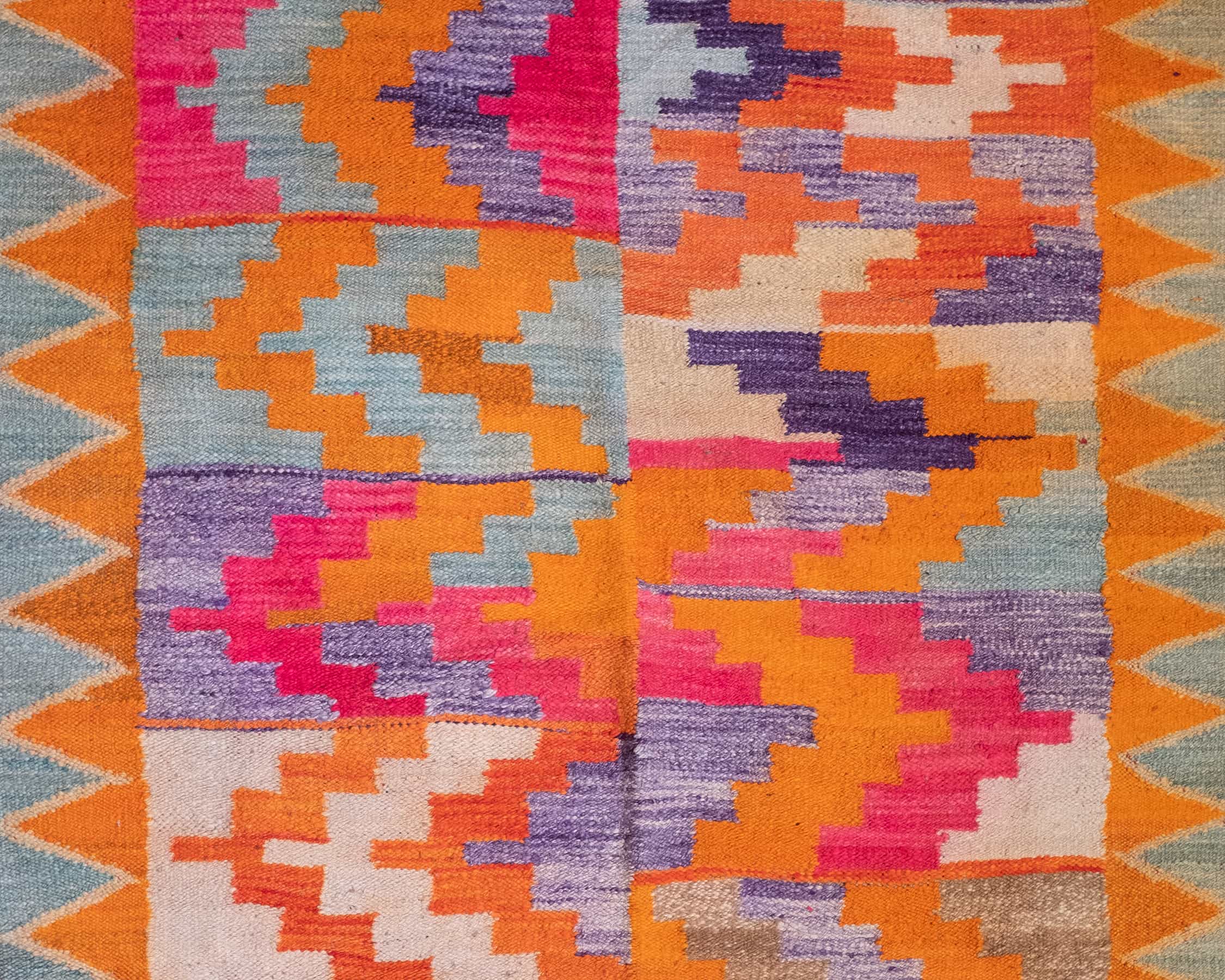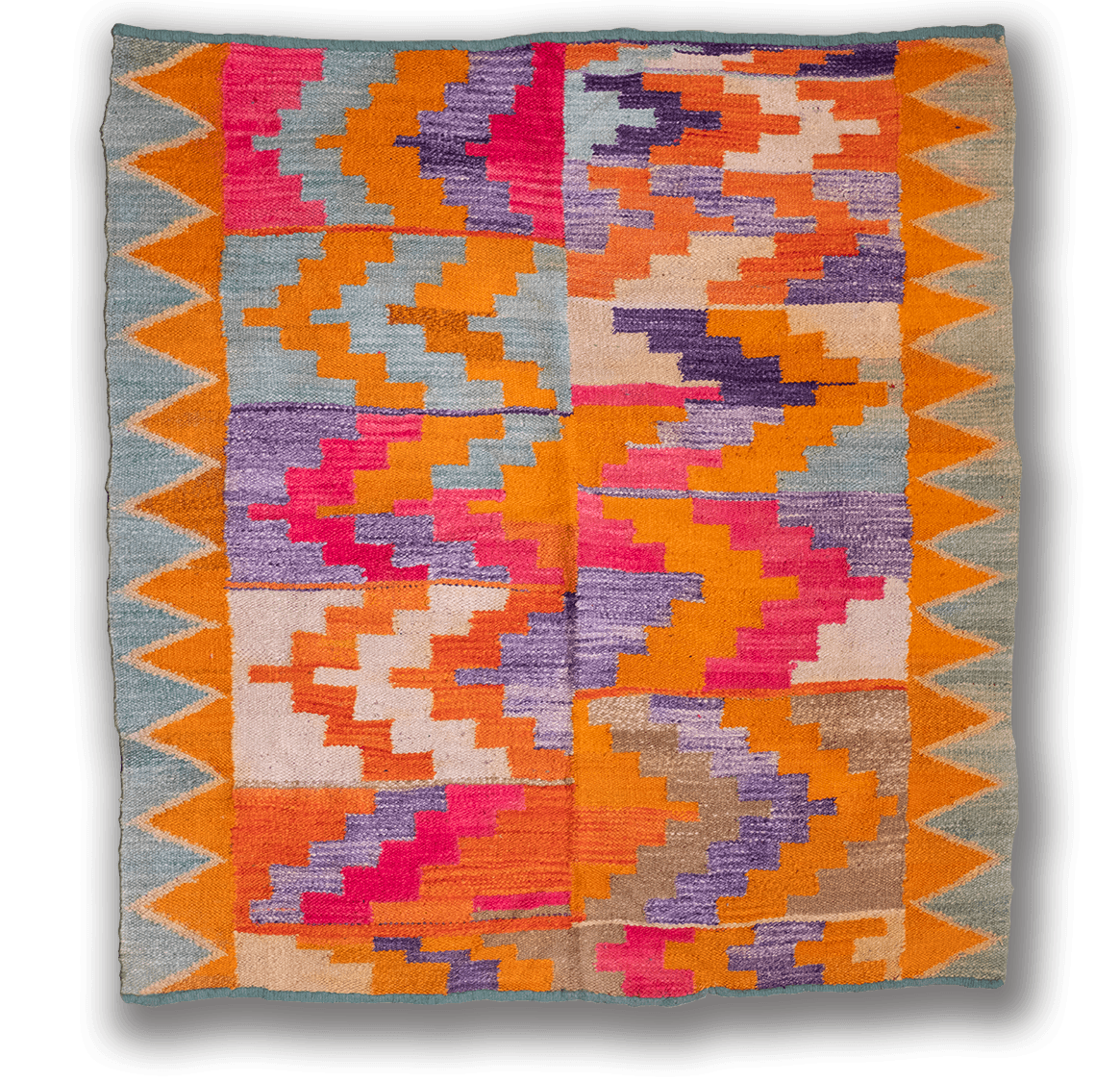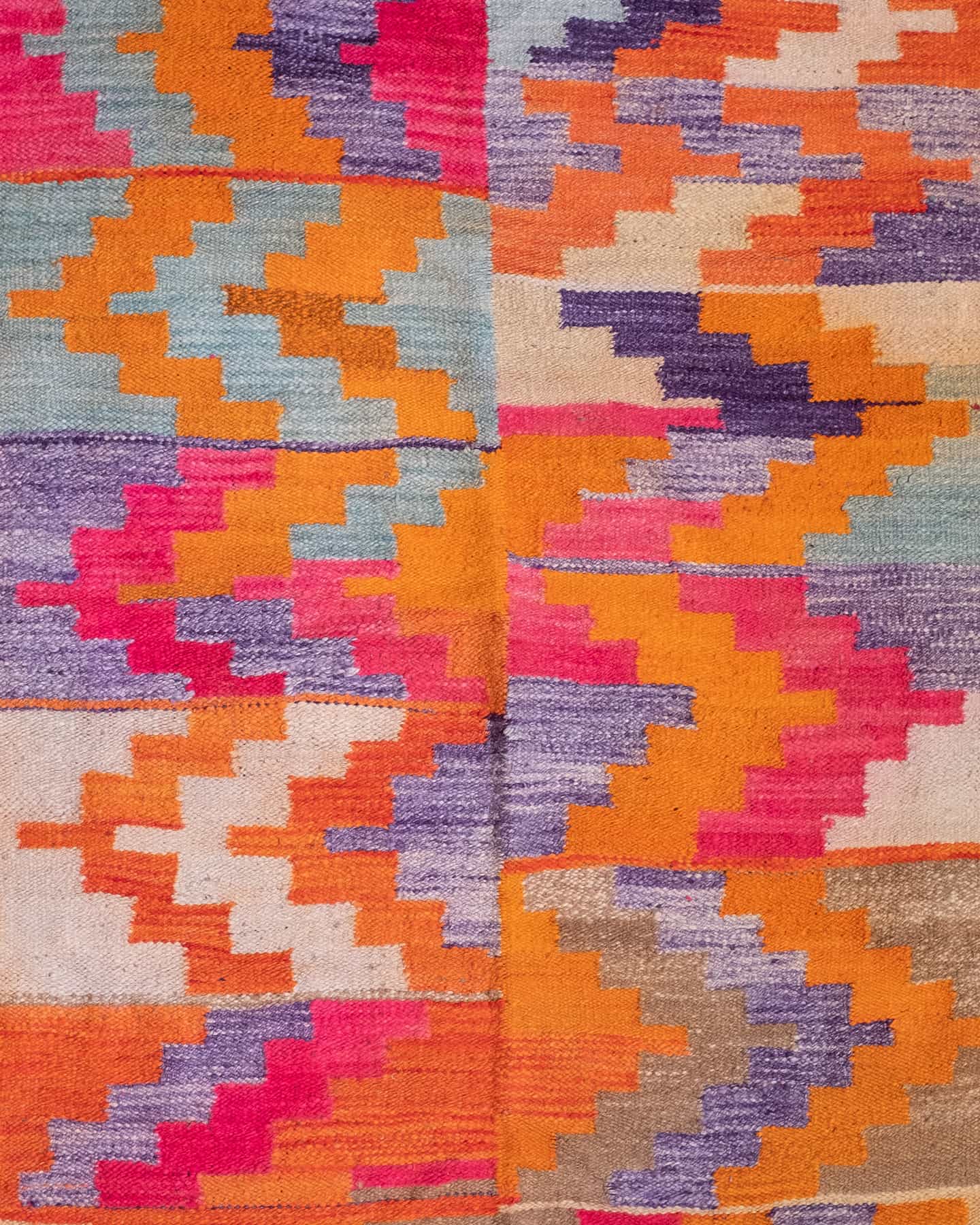History behind the piece
This type of rug begins its history when the Hispano-Arab rug reaches the land of the Peruvian master weavers and dyers, novel animals also arrive at that time, such as rams with abundant wool. The transformation needs spread the use of this new rug to unsuspected levels. Now it would become an indispensable element in the mounts, in the platforms and passageways of the wide temples, and even slowly modifies the small handy rug that used to be carried to the church to avoid kneeling in the daily religious functions on the hard brick floor or pillory.
Its original name in all the towns in which it was initially made was a work blanket, a useful, necessary and very precious commodity, especially in the highlands. It is believed that its production may have taken greater emphasis and popularity between the 18th and 19th centuries, being used in the mounts on which the mount would be based, also serving as a mattress in the trips through the regions.
Its original name in all the towns in which it was initially made was a work blanket, a useful, necessary and very precious commodity, especially in the highlands. It is believed that its production may have taken greater emphasis and popularity between the 18th and 19th centuries, being used in the mounts on which the mount would be based, also serving as a mattress in the trips through the regions.

The epicenter of production of these rugs, in its beginnings, was divided between the city of Piscobamba, the district of Conchucos, both in the department of Ancash, and the towns and villages in Santiago de Chuco, Mollebamba and Huamachuco in the department of La Libertad. The decoration began with an indigenous predominance, but Spanish-Moorish styles were assimilated along the way. Some colors in the Hispanic range were harmonized with the native colors and the twisted cord of the textile gave it its transitional character. When the ornamental and color fusion manifests itself, it is the moment of the heyday of the mestizo-creole rug. It is here that this type of textile becomes a heraldic piece that becomes the heritage of families as a valuable tapestry that happens from generation to generation, being the emblazoned carpets on a black background with floral decoration and initials of its owner the most care they have deserved and it is through them that we have been able to appreciate the very high degree of perfection they have achieved.
The mestizo-creole rugs were not woven in series. Each one is a different piece, each weaver has expressed in it their preferences for certain colors and motifs despite always following a certain pattern that unifies them. Very few weavers reflect the same design or use the same colors again. This in particular is a traditional piece from the department of Ayacucho made entirely by hand with sheep's wool.
Unlike many handcrafted fabrics that are currently being developed on large wooden pedal looms from the colonization era, this traditional piece was made on a simple vertical loom. Approximately two and a half months were used for its creation, just in terms of setting the loom and the careful development of the weaving. It should be noted that this time does not include the previous processes through which its fibers pass: from the shearing of the animal, cleaning of impurities and weeding the fiber, the color classification, the ordered of the strands, the twisting of the same for the obtaining of thread and even dyeing, processes that are also carried out by hand.
To start the weaving of this rug, it was necessary, after configuring the warp, to roll the large balls of sheep thread into small portions again according to the chosen colors, returning to the more maneuverable balls. Once the weaving has begun, the weft gradually conceals the warps completely, creating the decoration by changing the color across the width of the textile.
There are weavers who hang squared drawings on one side of the loom, others work with exact notes on measurements and graphics, others keep the design and its dimensions in mind. There are those who use as a model another blanket hanging in front of the workspace. In this process, the weavers' mental capacity to visualize the forms and translate them into the fabric emerges. As the work progresses, each woven line must be energetically pressed down with special combs.

Throughout the process, the weaver must have skills with his hands, concentration and good eyesight to weave the designs, strength and technique to handle the comb and a lot of meticulousness and cleanliness. A good traditional Peruvian rug must also have a uniform, even, very smooth and tight weave - the result of the perfect combination of a good thread, twisted and woven - that in terms of the technical part, as the other important element to value one of these rugs is the artistic aspect. The weaver demonstrates his art by harmonizing the shapes and colors of the chosen designs in such a way that there is a balance between all the elements that make up the rug. Finally, about this piece it can be said that it preserves the traditional characteristics of form, decoration and technique typical of the carpets from the department of Ayacucho. Its fabric that ranges from cadmium orange to cadet blue, passing through hints of deep pink and purple from the northwest (dyed with wild pigments) dedicates its iconographies mainly to show a deconstruction of the Chacana or Andean Cross.
Going back to the history, it is necessary to mention that the flowering of the Peruvian rug begins to decline with the commerce with the old world and later with the industrial avalanche. In our days there has been an attempt to react romantically by giving a small boost to the vernacular rug industry, but it has been carried out without artistic criteria imposing pseudo Inca patterns and drawings, without penetrating the natural style achieved after an intense cultural process of centuries, that it is only necessary to keep or resume so as not to adulterate or confuse.
Origin: Ayacucho
Measurements: 172 cm x 185 cm
Condition: Excellent
SKU: 0236-64
Measurements: 172 cm x 185 cm
Condition: Excellent
SKU: 0236-64
USD
$ 3580.00
$ 3580.00



